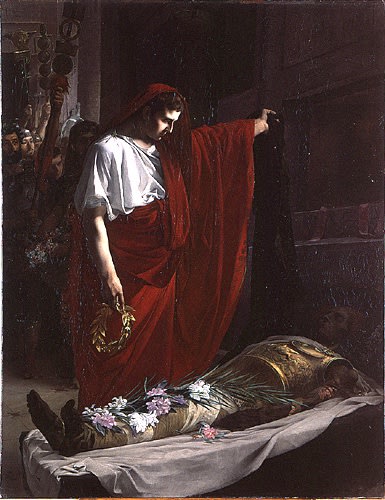François Schommer (1850 - 1935)
Study of a woman seen from behind
Dedicated, signed and dated: à Monsieur Vigneron / son ami reconnaissant / FSchommer . / 1893
Oil on canvas
35.5 x 27.5 cm. (14 X 10 ¾ in.)
Study of a woman seen from behind
Dedicated, signed and dated: à Monsieur Vigneron / son ami reconnaissant / FSchommer . / 1893
Oil on canvas
35.5 x 27.5 cm. (14 X 10 ¾ in.)
This dynamic, vibrant and enigmatic oil sketch displays the technical and compositional ability that allowed François Schommer to win the Prix de Rome in 1878, at the time France’s most illustrious prize for young artists. Born in Paris, Schommer studied at the Académie de Beaux-Arts under Isidore Pils and Henri Lehmann, both prominent academic painters. He exhibited at the Salon from 1870 right up until the end of his life in 1935. Other than his prize-winning painting in 1878 (fig. 1), Schommer also won medals at the Universal Expositions of 1889 and 1900. Named to the Légion d’honneur in 1890, he became a professor at the Académie des Beaux-Arts in 1910 and was elected to the Institut de France in 1924. All in all Schommer had a successful career, full of the typical milestones expected of the leading academic artists of his generation, many of whom, like Schommer himself, are today largely forgotten.
The subject of the oil sketch is intriguing but ultimately difficult to decipher with no further clues. With her white chemise, rendered with a beautiful impasto, falling from her shoulders, a kneeling lady’s porcelain back is bared. The red backdrop forms a veil through which her left forearm ethereally disappears. Possibly the painting is a preparatory work for a larger picture, knowledge of which would of course give meaning to the subject depicted here. That said the dedication to the otherwise unknown Monsieur Vigneron might suggest that the oil sketch is an end in itself, whose arcane subject would make sense to few but Schommer and his friend.

Fig. 1, François Schommer, Ceasar Augustus at the tomb of
Alexander, oil on canvas, 145 x 113 cm, école nationale supéreure
des Beaux-Arts



